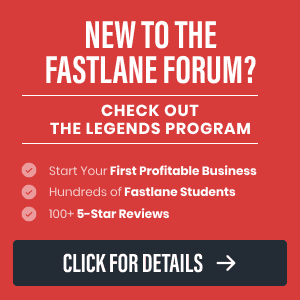User Power
Value/Post Ratio
95%
- Dec 26, 2020
- 44
- 42
I recently read Perry Marshall's book 'Detox, Declutter, Dominate: How to Excel by Elimination' and thought it was pretty good. In short, it's about focussing your time and energy on the small percentage of things you do that yield the highest return. It's very short and takes about an hour to read.
In the book, Marshall outlines the principle of having an espresso machine in your business. He says that for every 1000 customers that go into Starbucks and spend $5 on a coffee, 1 will scratch their coffee itch by buying a really expensive espresso machine. He arrives at this by applying the 80/20 rule which states that 80% of your profits come from 20% of your customers.
So if 1000 people come in for a $5 coffee, 20% of them will spend 4x more than the other 80%, meaning 200 will spend $20 each. Of those 200 people, 20% are willing to spend 4x more than the other 80%. That results in you having 40 people coming in and spending $80 each. Within this group of 80, there will be a further 20% who will spend 4x more than those other 80% - 8 people at $320 a pop. Of those 8 people, 20% are willing to spend 4x more which now leads to 1.6 (but round it down) will spend 4x320 on a product in your shop if they think it's valuable enough. So of 1000 people, 1 person will spend $1280 with you if you give them the chance.
It's worth noting that in the book he also says you can't sell a $5 cup of coffee for $1280, but as long as the product is perceived as distinct enough from the coffee and offers what the customer deems as a good deal, you will make the sale. There's a link at the bottom of this post to him giving a talk on this idea if you want it straight from the horse's mouth.
Here's the thing though, I'm not sure that this principle is actually true.
I ran a bar business for 3 years and very much doubt that 1 of every 1000 customers I had would have been willing to spend 256 times more than their peers at my bar.
What do you think? Does anybody have insight into this they're willing to share? I'd love to be proven wrong or have my mind changed.
View: https://www.youtube.com/watch?v=BXTaiq2Dh4s
In the book, Marshall outlines the principle of having an espresso machine in your business. He says that for every 1000 customers that go into Starbucks and spend $5 on a coffee, 1 will scratch their coffee itch by buying a really expensive espresso machine. He arrives at this by applying the 80/20 rule which states that 80% of your profits come from 20% of your customers.
So if 1000 people come in for a $5 coffee, 20% of them will spend 4x more than the other 80%, meaning 200 will spend $20 each. Of those 200 people, 20% are willing to spend 4x more than the other 80%. That results in you having 40 people coming in and spending $80 each. Within this group of 80, there will be a further 20% who will spend 4x more than those other 80% - 8 people at $320 a pop. Of those 8 people, 20% are willing to spend 4x more which now leads to 1.6 (but round it down) will spend 4x320 on a product in your shop if they think it's valuable enough. So of 1000 people, 1 person will spend $1280 with you if you give them the chance.
It's worth noting that in the book he also says you can't sell a $5 cup of coffee for $1280, but as long as the product is perceived as distinct enough from the coffee and offers what the customer deems as a good deal, you will make the sale. There's a link at the bottom of this post to him giving a talk on this idea if you want it straight from the horse's mouth.
Here's the thing though, I'm not sure that this principle is actually true.
I ran a bar business for 3 years and very much doubt that 1 of every 1000 customers I had would have been willing to spend 256 times more than their peers at my bar.
What do you think? Does anybody have insight into this they're willing to share? I'd love to be proven wrong or have my mind changed.
Dislike ads? Remove them and support the forum:
Subscribe to Fastlane Insiders.
